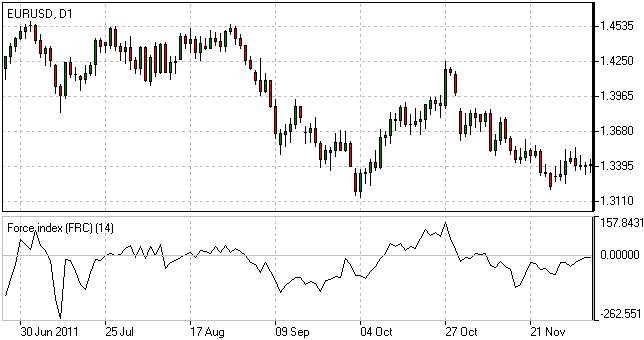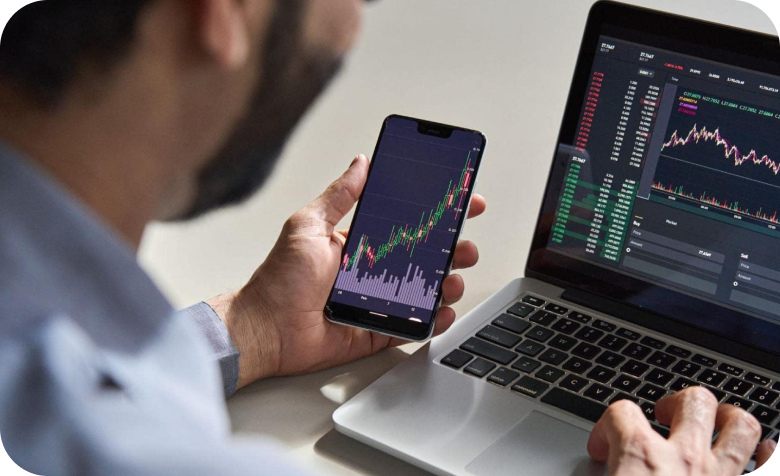- Ausbildung
- Technische Analyse
- Technische Indikatoren
- Oszillatoren
- Force Index
Indikator Force Index - Was bedeutet Force Index
Gebrauchsanweisung für den Indikator Force Index
Der Force Index (Kraftindex) erlaubt, die Verstärkung von verschiedenen Trends des beliebigen Zeitrahmens zu identifizieren:
- Für kurze Trends vergrößert sich die Empfindlichkeit des Indikators durch das Verringern seiner Periode.
- Für längere Trends beruhigt sich der Indikator durch die Erhöhung seiner Zeitperiode.
Der Force Index kann eine Trendänderung andeuten:
- Ein Zusammenbruch eines Aufwärtstrends, wenn sich der Wert des Indikators vom positiven zum negativen geht und der Preis und der Indikator eine Abweichung zeigen.
- Ein Zusammenbruch eines Abwärtstrends, wenn sich der Wert des Indikators vom negativen zum positiven ändert und der Preis und der Indikator gegenseitige Annäherung zeigen.
Zusammen mit einem trendfolgenden Indikator kann der Kraftindex helfen, Trendkorrekturen zu identifizieren:
- Eine Aufwärtstrendkorrektur, wenn der Indikator vom oben runtergeht.
- Eine Abwärtstrendkorrektur, wenn der Indikator von unten nach oben gleitet.

Indikator Force Index
Berechnungsformel für Force Index
Force Index(1) = {Close (current period) - Close (prior period)} x Volume
Force Index(13) = 13-period EMA of Force Index(1)Gebrauch des Indikators Force Index auf der Handelsplattform
Forex Indicators FAQ
What is a Forex Indicator?
Forex technical analysis indicators are regularly used by traders to predict price movements in the Foreign Exchange market and thus increase the likelihood of making money in the Forex market. Forex indicators actually take into account the price and volume of a particular trading instrument for further market forecasting.
What are the Best Technical Indicators?
Technical analysis, which is often included in various trading strategies, cannot be considered separately from technical indicators. Some indicators are rarely used, while others are almost irreplaceable for many traders. We highlighted 5 the most popular technical analysis indicators: Moving average (MA), Exponential moving average (EMA), Stochastic oscillator, Bollinger bands, Moving average convergence divergence (MACD).
How to Use Technical Indicators?
Trading strategies usually require multiple technical analysis indicators to increase forecast accuracy. Lagging technical indicators show past trends, while leading indicators predict upcoming moves. When selecting trading indicators, also consider different types of charting tools, such as volume, momentum, volatility and trend indicators.
Do Indicators Work in Forex?
There are 2 types of indicators: lagging and leading. Lagging indicators base on past movements and market reversals, and are more effective when markets are trending strongly. Leading indicators try to predict the price moves and reversals in the future, they are used commonly in range trading, and since they produce many false signals, they are not suitable for trend trading.
Verwenden Sie Indikatoren nach dem Herunterladen von einer der Handelsplattformen, die von IFC Markets angeboten sind.
Große Auswahl an Handelsplattformen für alle Geräte

Not sure about your Forex skills level?
Take a Test and We Will Help You With The Rest


